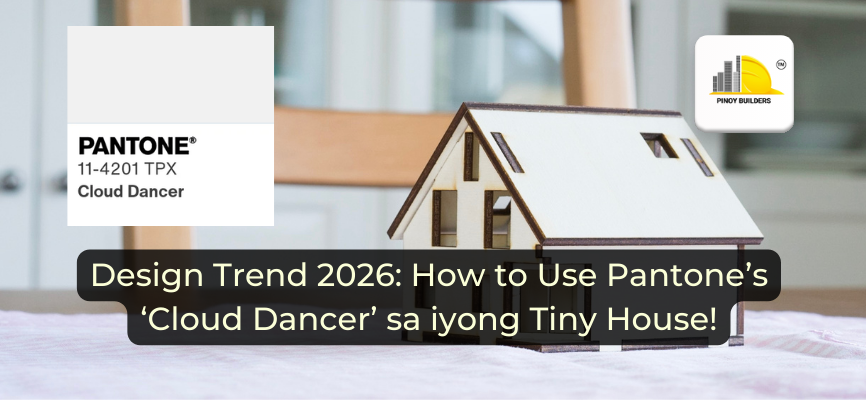Polycarbonate roofing has become a popular choice for modern homes in the Philippines due to its durability, versatility, and aesthetic appeal. This lightweight, high-performance material offers numerous benefits, including excellent light transmission, UV protection, and impact resistance.
Whether you’re looking to enhance natural lighting, create a stylish patio cover, or improve ventilation, polycarbonate roofing is a smart solution. In this article, we will unveil 5 innovative polycarbonate roof designs that can elevate your home’s functionality and style, along with tips on how to install them.
Sturdy and Stylish: 5 Polycarbonate Roof Designs

Knowing polycarbonate roof designs and installation methods is crucial for modern Filipino homes due to the material’s durability, sun protection, and aesthetic versatility. Polycarbonate roofs offer excellent light transmission, energy efficiency, and weather resistance, ideal for the Philippines’ tropical climate. Proper installation ensures maximum performance, longevity, and safety, preventing leaks and structural issues.
1. Transparent Roof for Natural Lighting
One of the most significant advantages of polycarbonate roofing is its ability to allow natural light to pass through while blocking harmful UV rays. A transparent polycarbonate roof can be installed in living areas, kitchens, or sunrooms to create bright, airy spaces that reduce the need for artificial lighting during the day. This design not only saves on energy costs but also enhances the mood and well-being of the occupants.

Installation Tip: Ensure proper sealing around the edges to prevent water leaks. Use high-quality silicone sealants and secure the panels with appropriate screws and washers.
2. Tinted Roof for Stylish Shade
For areas where you need shade without completely blocking out light, tinted polycarbonate panels are an excellent option. These panels come in various colors, such as bronze, blue, and green, and can be used for patios, pergolas, and carports. Tinted roofs add a touch of elegance to outdoor spaces while providing relief from the harsh sun.

Installation Tip: When installing tinted panels, consider the orientation and angle of your roof to maximize shade during peak sunlight hours. Use brackets and spacers to ensure proper alignment and ventilation.
3. Multi-Wall Polycarbonate for Thermal Insulation
Multi-wall polycarbonate sheets are designed with multiple layers, creating air pockets that offer superior thermal insulation. This design is perfect for roofing applications in areas that experience varying temperatures. Multi-wall polycarbonate roofs help keep indoor spaces cooler in the summer and warmer in the winter, enhancing overall energy efficiency.

Installation Tip: When cutting multi-wall panels to size, use a fine-toothed saw to avoid cracking. Secure the panels using H-profiles for joints and U-profiles for the edges to ensure a snug fit and prevent dust and moisture ingress.
4. Curved Polycarbonate Roof for Modern Aesthetics
A curved polycarbonate roof adds a contemporary flair to any home. This design is ideal for canopies, verandas, and walkways, providing both functionality and visual appeal. The flexibility of polycarbonate allows it to be easily bent and molded into curved shapes, creating sleek, modern structures that blend seamlessly with the architectural style of your home.

Installation Tip: Use specialized bending equipment or work with a professional to achieve the desired curvature. Ensure that the supporting framework is strong enough to handle the weight and tension of the curved panels.
5. Ventilated Polycarbonate Roof for Improved Airflow
In tropical climates like the Philippines, proper ventilation is crucial to maintaining a comfortable indoor environment. A ventilated polycarbonate roof design incorporates vents or louvers that allow hot air to escape and cool air to enter. This design is particularly beneficial for attics, greenhouses, and enclosed patios.

Installation Tip: Position the vents strategically to optimize airflow. Use adjustable louver systems to control the amount of ventilation based on the weather conditions. Secure the vents firmly to prevent them from becoming loose during strong winds.
How to Install Polycarbonate Roofing: A Step-By-Step Guide
Installing polycarbonate roofing requires careful planning and execution to ensure a long-lasting and effective roof. Here are some general steps to follow:
- Measure and Cut Panels: Accurately measure the area to be covered and cut the polycarbonate panels to size using a fine-toothed saw.
- Prepare the Framework: Construct a sturdy framework using materials like aluminum or steel. Ensure the framework is level and properly aligned.
- Install the Panels: Place the polycarbonate panels on the framework, starting from the bottom edge and working upwards. Overlap the panels by at least 50mm to prevent leaks.
- Secure the Panels: Use screws with washers to fix the panels to the framework. Do not overtighten the screws to avoid damaging the panels.
- Seal the Edges: Apply silicone sealant along the edges and joints to ensure a watertight seal.
- Inspect and Maintain: Regularly inspect the roof for any signs of damage or wear and clean the panels to maintain their transparency and effectiveness.
A Long-Lasting Roof For Your Home
Polycarbonate roofing offers a blend of durability, versatility, and aesthetic appeal, making it an ideal choice for modern Filipino homes. By selecting the right design and following proper installation techniques, you can enhance your home’s features and enjoy the benefits of polycarbonate roofing for years to come.










